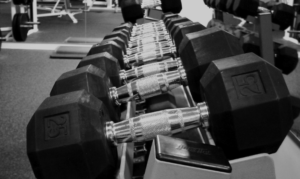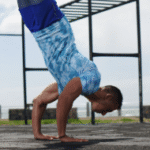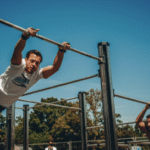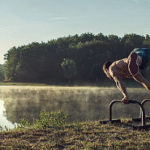Decline Push-Ups: Amp Up Your Chest Workout
The decline push-up is a powerful variation of the classic push-up that shifts the focus to your upper chest and shoulders, adding a new dimension to your bodyweight training. By elevating your feet, you increase the resistance and engage different muscle fibers, leading to greater strength and muscle gains. This guide will break down the benefits, proper form, variations, and progressions of decline push-ups, helping you amp up your chest workout and sculpt a more defined upper body.
Why Decline Push-Ups are a Chest Workout Game-Changer:
Upper Chest Emphasis: Decline push-ups primarily target the clavicular head of the pectoralis major (upper chest), giving you a more well-rounded chest development.
Shoulder Strength: They also engage the anterior deltoids (front of the shoulders) and triceps, building strength and stability in these key areas.
Increased Intensity: Elevating your feet increases the resistance compared to standard push-ups, leading to greater muscle activation and strength gains.
Versatile Exercise: Decline push-ups can be modified to suit different fitness levels and goals by adjusting the height of the elevation.
Accessibility: No need for fancy equipment! You can use a sturdy chair, bench, or even a stack of books to elevate your feet.
Mastering the Decline Push-Up:
Find Your Elevation: Choose a stable elevated surface like a bench, chair, or box. The higher the elevation, the more challenging the exercise.
Starting Position:
Elevated Feet: Place your feet on the elevated surface, shoulder-width apart.
Hand Placement: Position your hands on the floor, slightly wider than shoulder-width apart, fingers pointing forward.
Body Alignment: Form a straight line from head to heels, engaging your core and glutes to maintain stability.
Lowering Phase:
Controlled Descent: Slowly lower your chest towards the floor by bending your elbows, keeping them slightly tucked in.
Chest to Floor: Aim to bring your chest close to the floor while maintaining a straight body line.
Pushing Phase:
Extend Your Arms: Push back up to the starting position by extending your arms, engaging your upper chest and shoulders.
Full Extension: Lock out your elbows at the top of the movement.
Common Mistakes to Avoid:
Flaring Elbows: Keep your elbows slightly tucked in to avoid shoulder strain.
Excessive Back Arching: Maintain a straight line from head to heels, avoiding excessive arching in your lower back.
Neck Strain: Keep your neck neutral and avoid craning your neck forward.
Unstable Surface: Ensure the elevated surface is stable to prevent accidents.
Decline Push-Up Variations and Progressions:
Varying Elevation: Adjust the height of the elevation to modify the intensity. Higher elevation increases the difficulty.
Decline Diamond Push-Ups: Bring your hands together to form a diamond shape, increasing triceps activation.
Decline One-Arm Push-Ups: Challenge yourself with one-arm decline push-ups for advanced strength development.
Decline Clapping Push-Ups: Add explosiveness by clapping your hands at the top of the push-up.
Tips for Success:
Start Gradually: If you’re new to decline push-ups, start with a lower elevation and gradually increase the height as you get stronger.
Focus on Form: Prioritize proper form over the number of repetitions.
Listen to Your Body: Rest when needed and avoid pushing yourself too hard, especially when starting.
Warm-Up: Prepare your chest, shoulders, and wrists with dynamic stretches and light exercises before doing decline push-ups.
Consistency is Key: Incorporate decline push-ups into your workout routine regularly to see consistent progress.
Bonus Resources:
YouTube Tutorials: Search for “decline push-up variations” or “how to do decline push-ups correctly” on YouTube.
Calisthenics Communities: Join online forums or groups dedicated to calisthenics for support, motivation, and advice.
Certified Trainers: Consider working with a certified calisthenics trainer for personalized guidance and feedback.
By mastering decline push-ups and incorporating them into your training, you’ll amp up your chest workout, build upper body strength, and sculpt a more defined physique. So, embrace the decline and elevate your fitness journey!

Decline Push-Ups: Amp Up Your Chest Workout
Route
Calisthenics Gym Houston Functional Bodyweight Training

Secondary phone: (346) 483-3195
Email: info@calisthenicsclubhouston.com
URL: https://calisthenicsclubhouston.com/
Monday 6:00 AM - 7:00 PM Tuesday 6:00 AM - 7:00 PM Wednesday 6:00 AM - 7:00 PM Thursday 6:00 AM - 7:00 PM Friday 12:00 PM - 6:30 PM Saturday 9:45 AM - 12:00 PM Sunday 3:00 PM - 5:00 PM





